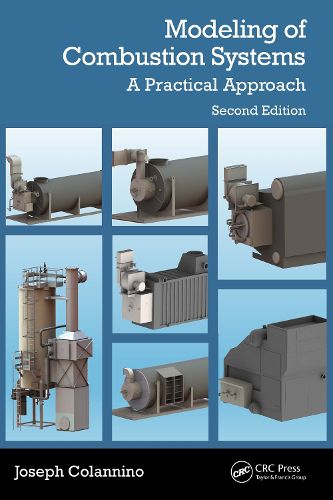Readings Newsletter
Become a Readings Member to make your shopping experience even easier.
Sign in or sign up for free!
You’re not far away from qualifying for FREE standard shipping within Australia
You’ve qualified for FREE standard shipping within Australia
The cart is loading…






Modeling of Combustion Systems provides accessible instruction for the operator or engineer to model combustion responses such as NOx, CO, flame dimensions, or heat flux as a function of input factors, such as excess oxygen, firing rate, furnace temperature, and fuel type.
Retaining the emphasis on practical semiempirical modeling of boilers, process heaters, and reactors, such as ethylene cracking units and ammonia and hydrogen reformers, the second edition expands the approach to include combustion air fans and representation of complex models (direct numerical simulations or computational fluid dynamics) in concise forms. It also shows how to design experiments to collect the most data with the fewest experiments and model real unit behavior with engineering accuracy.
This book is intended for technicians, operators, and engineers working with fired equipment such as boilers, reactors, and process heaters.
It includes 65 fully worked examples in MS Excel with detailed instructions. All example spreadsheets are available for download from the publisher's website
$9.00 standard shipping within Australia
FREE standard shipping within Australia for orders over $100.00
Express & International shipping calculated at checkout
Modeling of Combustion Systems provides accessible instruction for the operator or engineer to model combustion responses such as NOx, CO, flame dimensions, or heat flux as a function of input factors, such as excess oxygen, firing rate, furnace temperature, and fuel type.
Retaining the emphasis on practical semiempirical modeling of boilers, process heaters, and reactors, such as ethylene cracking units and ammonia and hydrogen reformers, the second edition expands the approach to include combustion air fans and representation of complex models (direct numerical simulations or computational fluid dynamics) in concise forms. It also shows how to design experiments to collect the most data with the fewest experiments and model real unit behavior with engineering accuracy.
This book is intended for technicians, operators, and engineers working with fired equipment such as boilers, reactors, and process heaters.
It includes 65 fully worked examples in MS Excel with detailed instructions. All example spreadsheets are available for download from the publisher's website